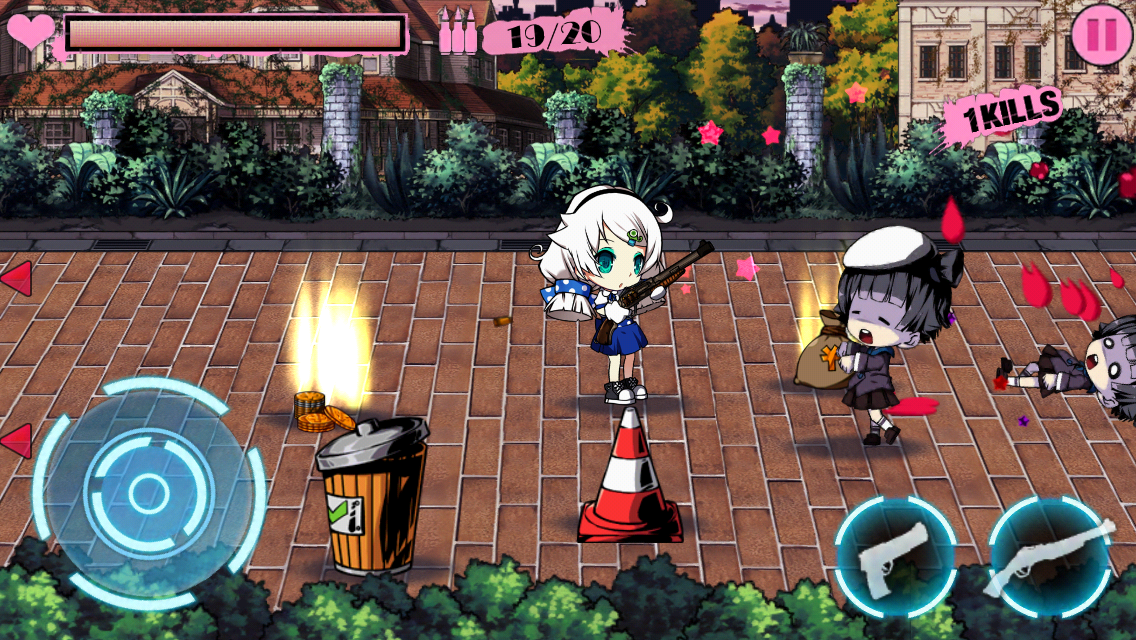The mobile operating system market for smartphones has changed very much over the past several years. In particular, we have seen the rise of two dominant competitors (Android and iOS) and the demise of an upstart (webOS). The past few months have seen new challengers enter the fray or announce plans to do so. The following is an analysis of the strengths and weaknesses of each competitor as well as a rough determination of market viability.
It should be noted that this should not be construed as investment advice.
1) Android
Strengths
Android, the operating system backed by Google, is by far the world leader in market share with almost 70% of the market as measured by shipments. Accounting for some margin of error due to the way various manufacturers report shipments vis-a-vis sales, Android has roughly 60-70% of the global installed user base. Android's open source nature and flexibility has allowed it to dominate overall market share, with particular strength in the mid- to low-end smartphone market. Android can be tweaked by users (e.g. via widgets) or manufacturers (e.g. Samsung's TouchWiz or HTC's Sense). Its connection to various app stores (e.g. Google Play and the Amazon App Store for Android), along with the ability for users to 'side-load' apps from non-app store sources has increased the amount of software available for the operating system. Google Play, in particular, has over 700,000 apps available for users to download.
Weaknesses
A major weakness of Android is the fragmentation due to various OS implementations and device integration. In the case of custom skins (such as the aforementioned TouchWiz and Sense examples), the combination of customization and wireless carrier interference has drastically limited the rate at which newer versions of Android proliferate throughout the installed user base. The two year-old Gingerbread was only recently eclipsed in market share by the combined share of the Ice Cream Sandwich and Jelly Bean releases. This fact, along with device hardware variability, makes it more burdensome for developers to target the Android market. As such, it is often the case that so-called 'premier' apps launch first on iOS and later on will release a version for Android (if at all). It should be noted that Android user web usage hints at the idea that Android users buy Android phones to be, well, 'phones' and not 'mobile computers'. Android is also heavily dependent on the success of a single manufacturer, in the form of Samsung. A danger exists in the form of 'forking' such as what Amazon did to produce its Kindle Fire.
Viability: Excellent
The strengths (and installed user base) of Android make its chances of remaining viable in the foreseeable future excellent. Assuming that non-compatible forked versions do not proliferate, Android's open source nature and large user base will protect its place in the market.
2) iOS
Strengths
iOS, the operating system created by Apple, has roughly 20% of the market (see the aforementioned report in the Android section for details). Despite trailing Android in market share, Apple has been able to use iOS to achieve roughly 70-75% profit share. iOS is known for being popular with users for its tight integration with the apps, video, music, and books available via Apple's App Store and iTunes Store. The App Store, in particular, has roughly the same number of apps (700,000) as Google Play yet has a staggering lead in terms of revenue generation with a much smaller installed user base. iOS tends to receive the lion's share of so-called 'premier' apps that launch first on the platform. Examples of this include Instagram, Angry Birds, and Instapaper. There have also been cases where app makers (such as Facebook) have focused their attention on upgrading the iOS version of the app months before upgrading the Android version of the app. iOS is exclusive to hardware from a single manufacturer (Apple), and as such it benefits greatly by being optimized for a significantly reduced hardware set. In addition, developers can more quickly make use of features available in newer versions of iOS since users are able to upgrade the operating system at a much faster pace than is seen with Android.
Weaknesses
iOS, being completely produced by a single company, suffers somewhat from not being able to quickly iterate on various new design ideas or feature innovations. iOS, as is often noted by more technically inclined users, does not offer powerful widgets that quickly provide information to the user (as is done in Android). In fact, in some cases where iOS has relative parity in features such as the Notification Center (which appeared earlier in Android), iOS has much more limited interaction available for the same feature. Likewise, iOS is hampered by a rather limited interapp communication scheme that does not provide the same flexibility offered in competing platforms. This makes it more difficult for developers to integrate with third party apps beyond the ones officially sanctioned by Apple (e.g. Facebook and Twitter). iOS also suffers somewhat in terms of services maturity exemplified by the new Maps app and iCloud Core Data syncing, though this somewhat mitigated by the availability of alternative services. iOS is, by and large, only available in the high-end phone market and is thus not within the reach of users with limited budgets such as those in India and China.
Viability: Good
Apple must overcome its shortcomings in terms of services maturity as well as rapidly innovate in offering developers and users newer (and better) features. If it does so, the profit-driven war chest combined with current large installed base of users willing to pay for a premium product will protect its place in the market.
3) Windows Phone
Strengths
Windows Phone, produced by Microsoft, has roughly 3% market share. This number is due, in part, to Windows Phone being released three years 'late to the party'. Windows Phone's strengths are in its integration with the Microsoft ecosystem (e.g. with the Xbox 360 via Smart Glass) and some third party providers (e.g. Facebook and Twitter integration in the People Hub). The 'Metro' design language works well to provide users with more information and less 'chrome', and is stylistically unique when compared to its competitors.
Weaknesses
Windows Phone suffers from a much smaller app store. This is exemplified by the absence of ports of notable applications such as Instagram. Major app announcements focus on apps that have been available on other platforms for years.
Viability: Fair
Windows Phone maintains some measure of safety due to the sheer size of Microsoft. However, it'll need to take better advantage of the Microsoft ecosystem (e.g. Office and Xbox) if it is to stand a chance in the long term.
4) BlackBerry 10
Strengths
BlackBerry 10, created by BlackBerry (formerly Research in Motion), is a renewed entry into the market. Its Android app compatibility has helped to create a larger app store than would be expected at this early stage after launch. BlackBerry 10 offers innovations in the area of communication integration, multi-tasking, and the separation of work versus personal data. BlackBerry 10 also continues BlackBerry's emphasis on security and messaging.
Weaknesses
The larger than expected app store is inflated by the inclusion of Android ports. While this helps to get the platform off the ground, it is also could turn out to be a crutch used by developers to avoid having to create a BlackBerry 10 port of an app that would take advantage of features unique to the platform. BlackBerry's market share has dwindled and faces pressure in the government and enterprise spaces from Windows Phone.
Viability: Fair
BlackBerry 10 must not only recapture the BlackBerry faithful (while fending off encroachment from Microsoft), but must also find a way to carve out a significant portion of users from Android and iOS.
5) Tizen
Strengths
Tizen, produced by a consortium led by Samsung and Intel, is a new entrant into the market. It is an open source, HTML5-based platform similar in many respects to webOS. The HTML5 foundation provides developers with an opportunity to more easily create apps that work across many kinds of devices. It is backed by Samsung, who leads the world in phone sales (all sales, not just smartphones). Samsung's interest in reducing its dependence on Google ensures it will maintain some level of interest in the platform.
Weaknesses
Tizen suffers from many of the same issues that plague platforms not named 'Android' and 'iOS': limited number of apps in general, especially in the area of premier apps. While being based on HTML5 confers some ease of transferring of skills for mobile app developers (especially if they have a web development background), the past failure of webOS, the pace of innovation in the native platform space, and the concern around the look-and-feel issues surrounding HTML5 apps deflate much of the advantages of going the HTML5 route.
Viability: Poor
Despite being backed by a market leader like Samsung, the issues surrounding HTML5 as a mobile operating system remain outstanding. As well, it is entirely possible that Samsung may decide to 'pull an Amazon' and fork Android in order to reduce its dependence on Google. This would relegate Tizen to a second-class citizen in the Samsung ecosystem.
6) Firefox OS
Strengths
Firefox OS, created by the Mozilla Foundation, is an open source, HTML5-based platform. It is targeted at devices at the low-end of the market, where it will have less competition from the likes of Apple or the mid- to high-end Android devices manufactured by Samsung. As well, the emphasis on low-end (and thus less expensive) phones allows Firefox OS an opportunity to catch some of the growing market in the developing world.
Weaknesses
Firefox OS shares all of the weaknesses of the aforementioned Tizen operating system. As well, it suffers from not being backed by a market behemoth like Samsung.
Viability: Poor
Entering a market with two established, entrenched platforms and two clear market manufacturers (one of which has its own hat in the budget OS ring) creates a poor outlook for Firefox OS.
7) Ubuntu (for phones)
Strengths
Ubuntu, backed by Canonical, is a smartphone interface for the Ubuntu operating system. It provides for native apps as well as HTML5-based apps. It has a user interface design that emphasizes the use of gestures. It provides a 'full PC experience' when docked.
Weaknesses
Ubuntu's strengths are arguably weaknesses as well. The extensive use of gestures to drive the UI may equally as innovative as it is daunting to use for new users. Trumpeting the ability to turn the phone into a 'full PC' would make more sense as an advantage for Microsoft (the desktop OS leader) than it does for an OS with a tiny desktop market share.
Viability: Poor
Ubuntu for phones, unfortunately, makes the least amount of sense as a platform compared to its competitors. Outside of some UI innovation, there is very little evidence that it stands a chance of surviving in a very crowded market.
Summary
The mobile operating system market has grown and matured at a fantastic pace. As the market matures, we will likely see a relative few competitors remaining in the space once the dust settles.


